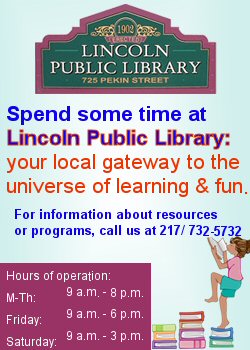|
Review by Richard Sumrall
 Genealogy (or family history, as it is
more commonly called) continues to be one of the most popular
pursuits in the world. In her new book, "Genealogy for the First
Time," author and researcher Laura Best writes, "Various reasons are
cited for people's fascination with their ancestors. For many, what
starts as a simple curiosity, grows into an obsession." The study of
one's family history is more than names, dates or kinship to
royalty; it is a person's search for "past family members in order
to learn of and record the unique and authentic lives of those who
formed [your] heritage." Genealogy (or family history, as it is
more commonly called) continues to be one of the most popular
pursuits in the world. In her new book, "Genealogy for the First
Time," author and researcher Laura Best writes, "Various reasons are
cited for people's fascination with their ancestors. For many, what
starts as a simple curiosity, grows into an obsession." The study of
one's family history is more than names, dates or kinship to
royalty; it is a person's search for "past family members in order
to learn of and record the unique and authentic lives of those who
formed [your] heritage."
In searching for that heritage Best has
outlined a logical, systematic method for genealogical research that
instructs anyone interested in their family's past.

"Genealogy Basics"
Usually the first question anyone asks
when considering tracing his or her lineage is, "How do I begin?"
It's best to begin with the information you have in your possession:
family documents, letters, Bibles, photographs, newspaper clippings
and any other scrap of information that will help you establish a
basic line of names and times. Don't forget the most important
source of information -- family members and relatives.
You should also develop a form that you
can use to record, compile and store your data for retrieval at a
later date. Today's obvious choice for such retrieval is the
computer; for those uncomfortable with computers a simple paper
filing system will suffice.
Best explains the two different kinds
of information that you will encounter in gathering your
information. A primary source of information is a record created at
the time of an event, usually by someone with personal knowledge. A
secondary source of information consists of records created
after an event took place or by someone who was not an eyewitness to
the event.

"Basic
Research Techniques"
According to Best there are seven steps
to completing a proper research cycle:
--Consult your information sheets and
set a goal.
--Choose the records needed to reach
your goal.
--Locate those records and sources of
information.
--Transfer the information to your
family group sheets or pedigree charts (a family "tree" that serves
as the master outline of your information).
--Always cite your sources
(genealogical information can be nortoriously inaccurate).
--Make and file copies of the
documents.
--Evaluate the new information to
determine if it meets your goal.
[to top of second column in
this review]
|

Best explains each of these steps and
how a researcher can put them to good use. She also describes how to
incorporate the personal computer into the seven-step routine and
how to use a computer to access the Internet for genealogical
information. She cautions that using a computer does not excuse
researchers from ignoring the basic research techniques; it's also
important to sift through the enormous volume of data on the
Internet by beginning your online research at a reputable,
comprehensive website.
"Beyond The Basics"
Once you are ready to begin your
research, you will discover that there are an almost endless number
of resources for you to explore. In this section Best looks at some
of the most popular resources and describes their value to
genealogists. These sources include family Bibles, census records,
maps, photographs, cemetery inscriptions, church records, land and
tax records, military files, wills and probates, immigration and
passenger lists, early newspapers, and naturalization and
citizenship records.
All of these potential sources are
important to establish what Best calls a "chain of evidence." She
states that developing a pedigree chart is similar to the links in a
chain: "The chain depends upon each link to add strength by the
amount of evidence obtained. In research, the goal should be to
build up a chain of evidence in which each link is strong enough to
support the next."

"Unique Uses of Genealogy Findings"
As your research progresses and your
family history starts to come together, the question arises
regarding the presentation of your work. Aside from the compilation
of the information onto computer discs or pedigree charts, some of
the more interesting presentation methods involve family
photographic displays or compilations of heritage scrapbooks.
Genograms can illustrate the structure and characteristics of a
family across three or more generations. Akin to (but not replacing)
a pedigree chart, genograms look beneath the surface of names, dates
and places so that one can recognize family characteristics and
patterns at a glance. According to Best, "By seeing family patterns
in a genogram, individuals may realize their personal identity more
fully by seeing themselves as part of greater family network."
"Genealogy
for the First Time" is a wonderfully written and beautifully
illustrated book on researching your family history. Best has
incorporated all of the standard accepted practices related to this
kind of a project and has skillfully integrated the latest
technologies into the overall concept of searching for one's
ancestors. A glossary of genealogy terms and a list of the most
popular Internet sites complete the work. This book is recommended
for anyone interested in or currently working on his or her family
history.
[Richard Sumrall,
Lincoln
Public Library District]
 |